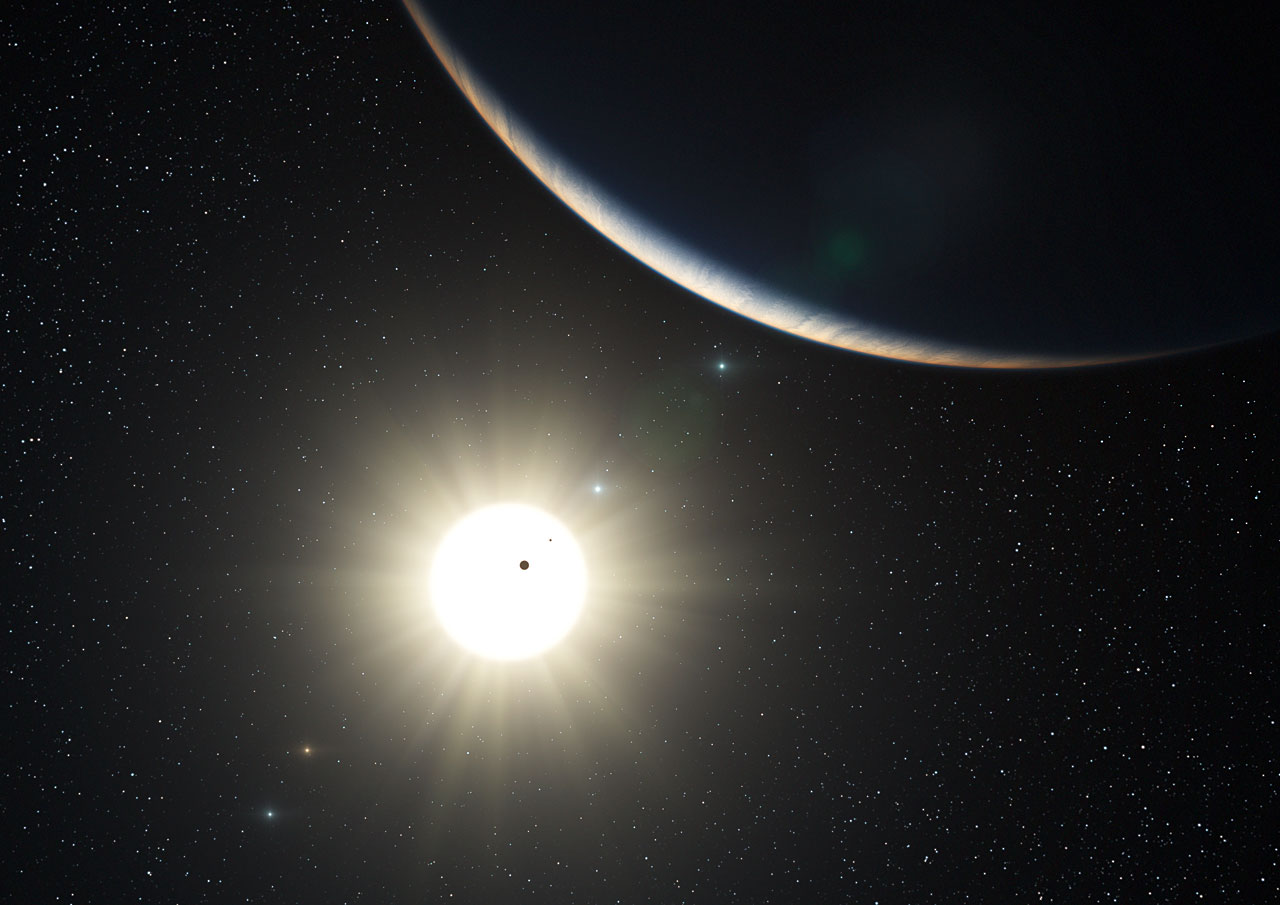
Stargazers discover “richest” planetary system

Astronomers have found a new planetary system with as many as seven planets orbiting a sun-like star – 127 light years from Earth.
If confirmed, the discovery by a European team, led by Christophe Lovis from Geneva University, represents “the richest” system of exoplanets – planets outside our own solar system – ever found.
“We have discovered what is probably the most populated planetary system known to date,” the lead researcher said in a statement on Wednesday.
This remarkable discovery highlights the fact that we are now entering a new era in exoplanet research, added Lovis.
“This shows that we are able to detect complex systems of small planets, which opens up huge perspectives, as these systems are probably very numerous,” he told swissinfo.ch.
The new find consists of at least five planets of the same mass as Neptune – 13 to 15 times that of the Earth – orbiting a star called HD 10180, located in the constellation of Hydrus.
The objects take between six and 600 days to orbit their star at distances varying from 0.06 to 1.4 times the distance between the Earth and the Sun – an average of 149 million kilometres, known as one astronomical unit.
“They are made essentially of rocks and ice. They have a solid core. But on top of that is a layer of gas, of hydrogen and helium most likely,” said Lovis. “They are probably not habitable.”
The astronomers also have “good reasons” to believe that there are two more planets in the same system.
The sixth is thought to resemble Saturn and orbits the star in 2,200 days, while the seventh would be the smallest exoplanet ever discovered, with a mass only 1.4 times that of the Earth. But its similarity with our planet ends there, as it is extremely close to its star – just two per cent of one astronomical unit; one “year” on this planet would only take just over a day.
“Five are certain and for the other two, whose signal is very small, we are 99 per cent sure,” said Lovis.
Unique find
At up to seven planets, the new discovery nearly matches our own solar system, which has eight.
The discovery was unique in several respects, the research team said.
With at least five “Neptune-like planets” orbiting within a distance equivalent to that of Mars, the HD 10180 had a more populated inner region than our own solar system. And all the planets seem to have almost circular orbits.
Using the new discovery as well as data for other planetary systems, the astronomers discovered an equivalent of the “Titius-Bode” law that exists in our solar system: a regular, hidden pattern in the spacing of the orbits of the planets.
“This could be a signature of the formation process of these planetary systems,” said Swiss astronomer Michel Mayor.
Tracking movement
The researchers used the world’s most precise exoplanet-hunter: a High Accuracy Radial Velocity Planet Searcher (HARPS) spectrograph attached to a 3.6-metre telescope at the European Southern Observatory (ESO) in La Silla, Chile.
Over six years, they took 190 measurements, checking it for the telltale wobble of a star caused by the gravitational forces of nearby orbiting planets.
The team of astronomers measured the movements and then broke them down so as to ascertain the precise number of planets, their masses, and the path of each planet’s orbit.
Scientists have been successfully hunting exoplanets for about 15 years, and they have now recorded some 450.
So far astronomers have found 15 systems containing at least three planets. The last record holder was 55 Cancri, which has five planets, including two giant gas ones.
The new find was made by researchers from Switzerland, France, Germany and Portugal, and has been submitted to the Astronomy and Astrophysics journal.
Simon Bradley and Marc-André Miserez with agencies, swissinfo.ch
Exoplanets are planets outside our solar system.
The first exoplanet was discovered by Swiss astronomers Michel Mayor and Didier Queloz from the Geneva Observatory in 1995.
Since then some 450 exoplanets have been identified, although none can be seen by telescope. They can only be detected indirectly.
The overwhelming majority of exoplanets found so far are so-called “hot Jupiters”: large gas planets orbiting close to their star.
However, in 2007 Mayor and fellow astronomer Stéphane Udry discovered the first Earth-sized exoplanet, lying 20.5 light years or 120 trillion miles away, with a mass five times that of our planet.

In compliance with the JTI standards
More: SWI swissinfo.ch certified by the Journalism Trust Initiative
















![The four-metre-long painting "Sonntag der Bergbauern" [Sunday of the Mountain Farmers, 1923-24/26] had to be removed by a crane from the German Chancellery in Berlin for the exhibition in Bern.](https://www.swissinfo.ch/content/wp-content/uploads/sites/13/2025/12/01_Pressebild_KirchnerxKirchner.jpg?ver=a45b19f3)













You can find an overview of ongoing debates with our journalists here . Please join us!
If you want to start a conversation about a topic raised in this article or want to report factual errors, email us at english@swissinfo.ch.